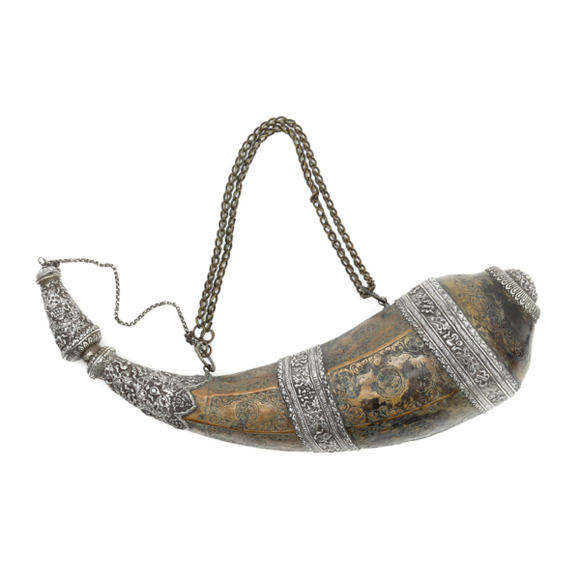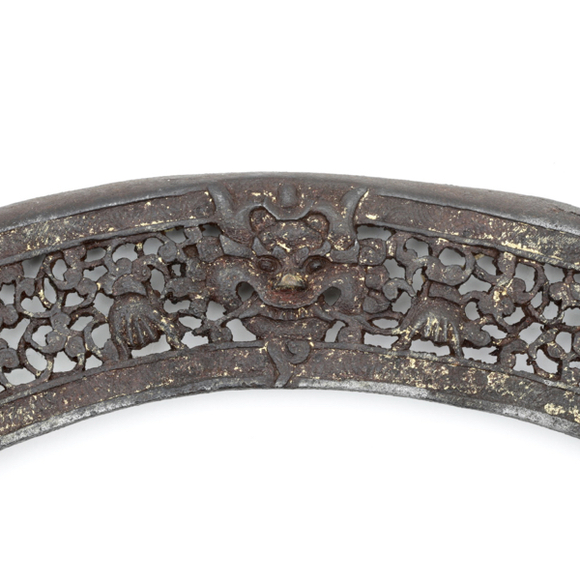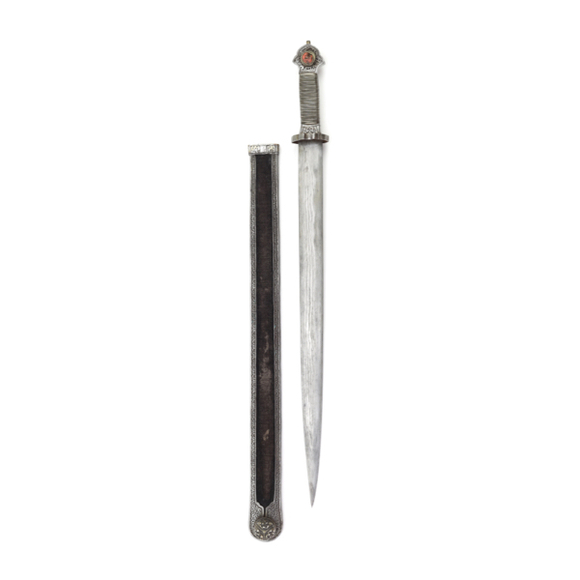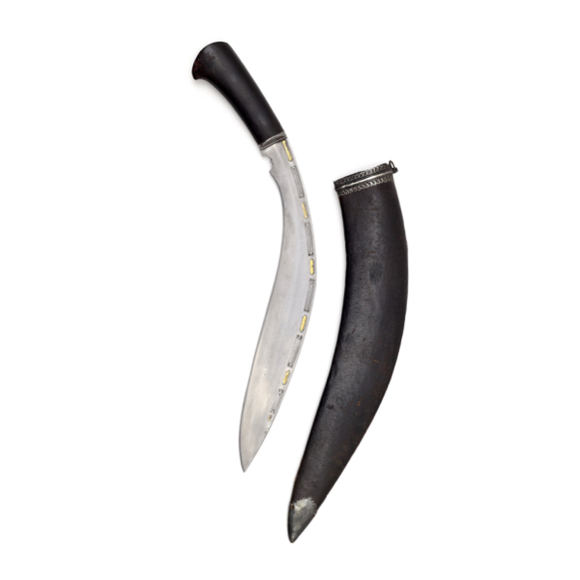Language: Tibetan
Source: Classical literature
Description
Pa tam (པ་ཏམ་) is the name of the Tibetan sword. Today the term dpa'dam (དཔའ་དམ་) is more commonly used.1
Pa tam (པ་ཏམ་) is found in a Qing multi-language dictionary of 1766.2 The Chinese equivalent given for the term is yāodāo (腰刀) or "waist sword", and loho in Manchu. During the Qing, the latter two were usually used to describe the standard Qing saber.
The Tibetan traditional sword is of somewhat archaic form; straight single-edged with back and edge running parallel until the oblique tip. The scabbard is often made with an iron U shaped frame that holds two wooden plates.

A dpa'dam of archetypical form but of superior workmanship.
Sold by Mandarin Mansion in 2018.
Hairpin forging
The blades often exhibit a number of dark lines of so-called "female iron" or mo lcags forged into layers of lighter "male iron" or pho lcags. The light steel has a higher carbon content, making the hard parts of the sword -including the edge- while the softer steel adds toughness and resilience to the construction. Many cultures have devised similar ways to make swords out of different types of steel. What sets the Tibetans apart is that their smiths worked in high altitudes with low oxygen levels and limited fuel, making it more difficult to heat large forges to high temperatures. As a consequence, they devised ways to weld the layers together using a minimum of heat, stacking the layers instead of folding them. This results in the typical "hairpin pattern", named so after the hairpin-like shape of its various layers.
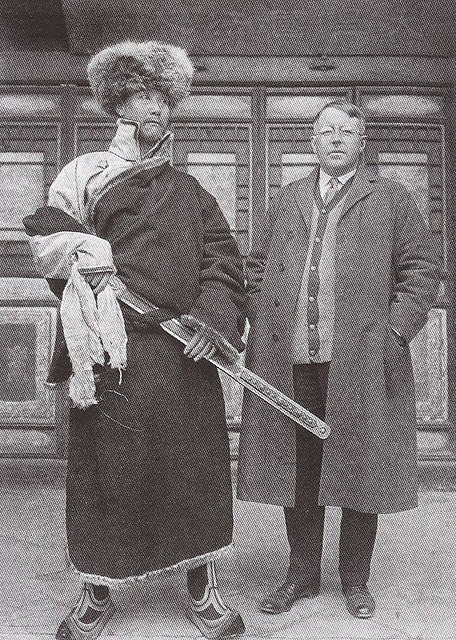
Joseph Rock (right) with the Prince of Choni (left) wearing his dpa'dam.
National Geographic Society, 1925.
Notes
1. Donald J. Larocca; Warriors of the Himalayas; Rediscovering the Arms and Armor of Tibet, The Metropolitan Museum of Art, New York. Yale University Press, New Haven and London. Page 274.
2. Wuti Qingwen Jian (五體清文鑑) or "Five languages compendium", a Qing imperial dictionary in Manchu, Mongolian, Uighur, Tibetan and Chinese of 1766. Published under the Qianlong emperor.

